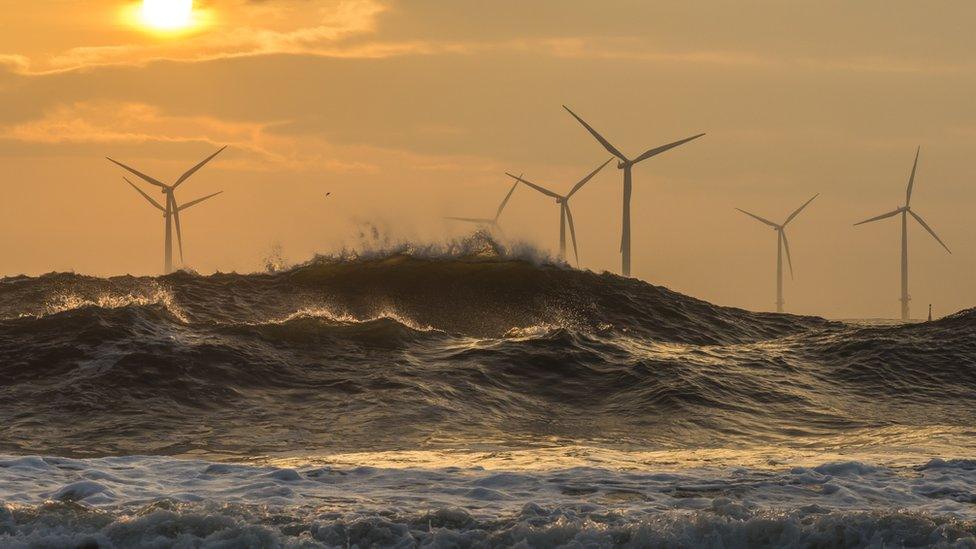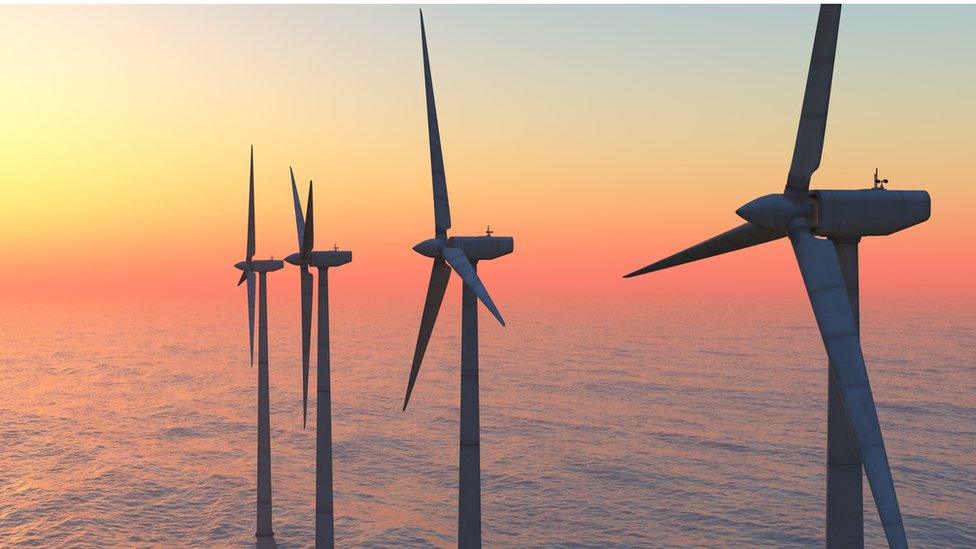Renewable energy: Rise in global wind speed to boost green power
- Published

Rising winds are boosting energy production from turbines
A new study suggests that global wind speeds have increased substantially since 2010 after decades of decline.
Scientists say they believe that changes in the patterns of ocean and atmospheric circulation are behind the rise.
The researchers say the discovery is very good news for the wind energy industry.
They believe that speedier winds will see the energy produced by a single turbine grow by about 37%.
From the 1980s, scientists detected a marked decrease in the speed of winds around the world.
Termed "terrestrial stilling", the decline was large enough that had it continued until the end of this century, global wind speed would have declined by 21%.
The authors of the study say this would have halved the amount of power available from the wind industry.
Scientists were uncertain as to what was causing the decline. One theory argued that the greening of the Earth or more urbanisation was increasing surface roughness and curbing wind speeds.
But this new study suggests that by itself, the roughness idea is not enough to explain the changes.
By looking at data from 9,000 ground weather stations combined with statistical models, the researchers show that over the years since 2010, winds have picked up "significantly" around the globe.
The rate of speed increase is in fact three times greater than the rate at which the winds were declining before 2010.
The authors believe that the reason for the increase is more to do with changes in the ocean and atmospheric circulation patterns and not down to surface roughness alone.

"By ocean atmospheric circulation, we mean heating of the Earth's surface which creates pressure gradients and thereby wind," said co-author Dr Adrian Chappell from the University of Cardiff, UK.
"Changes in these circulations have changed wind speeds. The alternative and/or contributing cause of change in wind speed is due to change in land surface roughness. It is very unlikely that change in roughness alone has caused the change in wind speeds. It remains plausible that the combination of large-scale circulation and change in roughness has caused the change in wind speed."
The finding helps explain an increase in the capacity factor of the US wind fleet which has risen at a rate of 7% per decade.
It had been assumed that technological innovation was behind the improvement but according to the new study, 50% of the rise is due to increasing wind speeds.
Overall, the finding is "good news" for the wind energy industry, the authors say.
"The reversal in global terrestrial stilling bodes well for the expansion of large-scale and efficient wind power generation systems in these mid-latitude countries in the near future," Dr Chappell said.
If the trends persist for the next decade, wind power from a single turbine would rise to 3.3 million kilowatt hours in 2024, an overall increase of 37%.
The authors believe the increase in wind speeds will decline again in future but will persist for at least the next 10 years.
The study has been published, external in the journal Nature Climate Change.
Follow Matt on Twitter @mattmcgrathbbc, external.